THE OPULENT MISERY OF THE ROMAN THEOCRACY

On 20 September 1870, not only was the capital of the new Italian state conquered, but a secular theocracy, comparable to the one currently in power in Iran, which made arbitrariness and corruption the oil needed to run the apparatus of a despotic and inefficient state, was put to an end.
For historical and religious reasons, nothing has changed from 1870 to today: the papacy has learnt, over the centuries, to rear its head, like a tortoise, and wait for better times, without yielding a single millimetre on its prerogatives. In the last 150 years, spent trying to reconcile the invasiveness of Catholicism with the needs of a new and modern secular state, Italy has been called upon several times to curb, save, defend, but above all to defend itself from the Vatican, whose bureaucracy and capacity for corruption continue to be a problem for the administration of the state. By diplomatic agreement, the Holy See is not included in the world corruption ranking but, using the values with which that ranking is compiled, it would be in last place, after South Sudan[1].
Within Italy, the Vatican remains an extraneous force, powerful and wealthy, but at the same time deeply corrupt and inefficient, which has never shown itself capable of administering its own assets, which sails from robbery to robbery, from tax privilege to bankruptcy, and produces a ruling class mainly composed of people interested only in their own personal gain. Summarising some of the scandals of the last 150 years is necessary to understand part of the Italian miracle: a state born from nothing two centuries ago, by agreement of the great European monarchies in Vienna. A country that was born without a language, an army, or a common bureaucracy, but managed to join the ranks of the world’s great economies and guarantee the secularity of social life – often at a very high price.
From the Banca Romana to the Ambrosiano – a single scandal
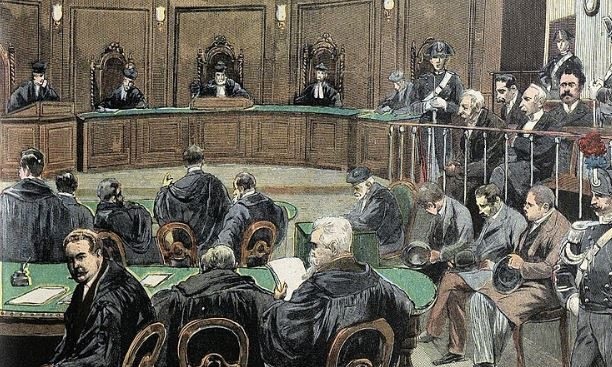
April 1893: Newspapers show the trial against the management of the Banca Romana di Credito[2]
In the peace agreements signed after the fall of Rome, arrangements were made for the patrimony of the Church State, divided between a company managing the churches, monuments and artistic treasures (now incorporated in the holding company APSA), a company managing the building patrimony (the Società Generale Immobiliare Roma[3]) and a financial institution with a licence to mint Italian currency[4]: the Banca Romana di Credito[5], which had been founded in 1833 to anchor the Vatican in a currency and political agreement with France and Belgium[6]. While the part of the APSA, supported by voluntary payments from the faithful, hotel administration and museum income, was always an active budget item, the rest collapsed before the turn of the century[7].
In January 1893, the Banca Romana announced bankruptcy, caused by having printed money illegally to cover debts due to galloping inflation, wars around the world that brought many trade routes to their knees, and the corruption necessary to obtain building contracts for the reconstruction of Rome to make it the capital of Italy[8]. This bankruptcy led to the collapse of the entire Italian banking system, obliging the King to create the Bank of Italy as the only institution with a licence to print money, and to pay off the debts of the banks, to avoid the collapse of the entire country[9]. As a result of the same scandal, the Società Generale Immobiliare also went bankrupt, and was liquidated[10].
The Vatican used much of the money received to found a new bank, the Banco Ambrosiano, created in 1896 by the Catholic banker Giuseppe Tovini, who replaced the branches of the Banca Romana with new small local banks, such as the Banca San Paolo di Brescia and the Banca di Valle Camonica. Tovini, beatified in 1998, firmly believed that Catholic institutions should be autonomous – an example: to obtain credit it was necessary to show a baptism certificate[11]. When Roberto Calvi joined Banco Ambrosiano in 1947, the institution already had half a century of history and, as director of the Società Generale Immobiliare, also some scandals behind it[12].
The story of the fraudulent bankruptcy of Banco Ambrosiano is the focus of a great deal of study and analysis, because with that bank, the Vatican operated illegally together with Opus Dei, the Mafia, Freemasonry (the P2 lodge), deviant secret services and the CIA[13]. Each of these powers used Banco Ambrosiano as a cash cow, leaving it with no more money, a $1.4 billion budget hole, and a man in charge, Roberto Calvi, blackmailed by all and, in the end, barbarously murdered[14].
Also at this juncture, in order to prevent Banco Ambrosiano’s debts from dragging the other banks down with them, the State committed seven major banks to waiving their claims and pouring the assets they administered on behalf of the Milanese bank into a New Banco Ambrosiano, which guaranteed the smooth running of daily banking[15]. In addition to the conviction of Licio Gelli, Umberto Ortolani and Flavio Carboni, the scandal sees a ‘clear assumption of responsibility’ by the IOR’s top management. Archbishop Paul Marcinkus was not arrested just because he was a resident of the Vatican State, which did not extradite him. The IOR nevertheless pays $242 million as a ‘voluntary contribution’[16].
The case of Banca Antonveneta
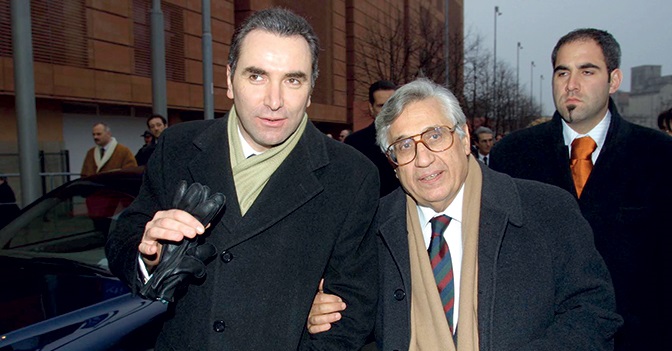
March 2005: Bank of Italy Governor Antonio Fazio (centre) and Banca Popolare di Lodi Chairman Gianpiero Fiorani (left)[17]
Between 2004 and 2005, large foreign groups want to take control of some Italian banks. The Dutch bank ABN AmRo is interested in Banca Antonveneta, while Banco Bilbao Vizcaya Argentaria (BBVA) in Banca Nazionale del Lavoro (BNL). ABN Amro and Banca Popolare di Lodi launched a bid to buy Antonveneta, while BBVA and Unipol tried to buy BNL. These purchase proposals do not get enough shares[18]. The governor of the Bank of Italy, Antonio Fazio, favours Gianpiero Fiorani’s BPL, to the detriment of the Dutch bank, by illegally acting on licences for share transactions. In February 2005, Fiorani became managing director of Antonveneta[19].
An investigation was launched on the Dutch bank’s report, which showed that prices had been falsified, that BPL had paid with money lent (without guarantee) by BNL, and that it did not have enough to repay the loan, that in the Bank of Italy, apart from the governor, other high officials knew and allowed the abuse. And it turns out that, at the bottom of the cesspool of malfeasance, there was an attempt by the Catholic Church to prevent a foreign bank, by buying Antonveneta, which had always been in the hands of the Paduan clergy, from uncovering decades of illegal behaviour and corruption[20].
The doubts about Antonveneta are not new: Cardinal Albino Luciani raised them 30 years earlier, even before being elected Pope John Paul I. Luciani ascended to the throne with a programme to fight corruption and bring transparency to the accounts of the banks controlled by the Holy See – but he lasted only 33 days, just long enough to win the love of the Italians, but not to fulfil his programme: since then, rumours about the possibility that the Pope had been assassinated by other prelates have never died down – especially those accusing Cardinal Paul Marcinkus, already a key figure in the Banco Ambrosiano scandal[21], who was called into question by an American Mafia boss, Anthony Luciano Raimondi[22].
The Emanuela Orlandi case

Rivers of words have been written about the tragic disappearance of this little Roman girl with Vatican citizenship. The currently most credited version is that Emanuela Orlandi was kidnapped by two powerful Vatican paedophiles[23] and then turned into a relevant object of blackmail against the Vatican by a member of the feared Banda della Magliana, closely linked to the Holy See and the P2 Lodge. This would be Renatino De Pedis, whose referent in the Vatican would be one of John Paul II’s most trusted men (and most connected to the Mafia): Monsignor Paul Marcinkus, then president of the IOR – a version supported by Sabrina Minardi, Renatino’s lover for years[24]. The Banda della Magliana was a troop of common criminals from a Roman working-class neighbourhood who, from 1975 onwards, terrorised Italy by carrying out contract killings on behalf of the Mafia, the Vatican, American and Italian secret services and neo-fascist organisations[25].
The girl was allegedly hidden near the Gianicolense ring road, then killed and thrown into a cement mixer in Torvaianica. On the day of the incident, she and Renatino went to a rubbish dump with two black bags, one containing Emanuela’s body and the other an 11-year-old boy murdered in revenge, the son of a known gang member. The reasons for the kidnapping were allegedly due to internal disputes between Vatican and Italian criminality over money laundering[26]. According to Minardi, she had escorted the 16-year-old Roman girl, a week after the kidnapping, to the presence of a churchman, on the Janiculum Hill[27].
Various hypotheses have been examined on the motive of the kidnapping: international terrorism, kidnapping to obtain an exchange with Ali Agca, a member of the Turkish nationalist movement of the ‘Grey Wolves’, who was in prison at the time for having made an attempt on the life of Pope John Paul II[28], Bulgarian espionage, and the KGB, although the most reliable lead remains that of the Vatican: the girl would have been the innocent victim of an internal settling of accounts within the Holy See[29]. Even today, 40 years after the affair, Emanuela’s family still struggles in vain to learn the truth and, if possible, to bury the girl in a Christian manner. The fact that the truth about this affair will never be fully told remains one of the most horrific stains on the contemporary Papacy’s record.
The APSA scandals and the appointment of Gotti Tedeschi
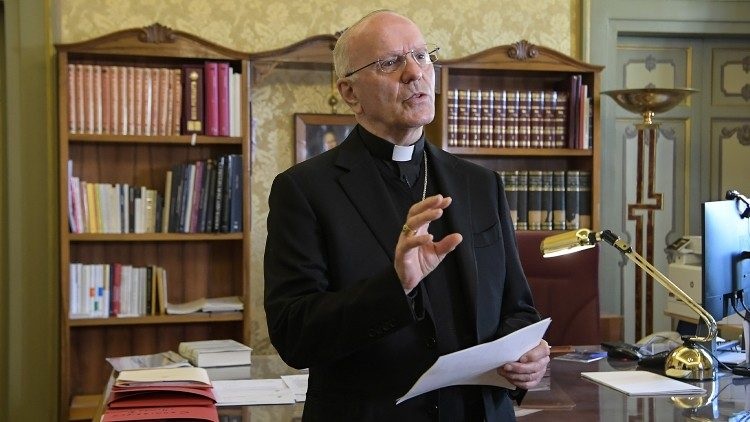
Bishop Nunzio Galantino, current president of APSA[30]
The APSA is the Administration of the Patrimony of the Apostolic See, thus the real central holding company of the Vatican. APSA is the Vatican’s general accounting office, administers the Holy See’s property, pays the salaries of Vatican employees and acts as a purchasing centre and human resources department[31]. Since it has never had a corresponding agency to control transactions (especially foreign ones), APSA has been a mystery for over a century, but also a danger: a bankruptcy of this agency would be irresolvable.
Pope Francis decided to get to the bottom of the financial scandals, authorising new Vatican financial authorities to investigate any irregular practices: the Financial Intelligence Authority (FIA) was created, and a supervisor was appointed to check the economic activities of the various departments[32]. It took only a few hours to bring the first scandal to the fore: Vatican investigators were investigating the activities of the president of Banca Finnat Euramerica, Giampietro Nattino, who allegedly used APSA accounts for personal transactions on the Italian stock market and moved a large sum of money (more than two million euro is said to have been involved) in Switzerland a few days before the introduction of stricter rules against money laundering. The accusation: money laundering, abuse of confidential information and market manipulation[33].
In the course of the investigations into Nattino and the accounts of non-Vatican citizens in the IOR and APSA (according to the laws of the Holy See this is forbidden), not only the Vatican inspectors, but also the Italian judiciary uncovered one ugly thing after another. One of the most impressive was that of Cardinal Nunzio Scarano, a former bank official, who took his vows in 1987 and immediately joined the APSA management as a broker and property manager[34]. Remaining in this position for over 20 years, Scarano became extremely rich, bought himself a fabulous house and became famous for having pockets full of €500 notes. The Salerno Public Prosecutor’s Office discovered that, for years, Scarano had been skimming off illegal transactions, helping tax evaders to bring their capital back to Italy while avoiding controls – by providing them with accounts at the APSA and the IOR[35].
In September 2009, economist Gotti Tedeschi became President of the IOR, with the task of finally cleaning house[36]. He engages in operations against tax evasion, money laundering and corruption, but it is short-lived: in 2010, the Italian judiciary seizes 23 million of the IOR’s assets, on the recommendation of the Cassa di Credito Artigiano, for violation of anti-money laundering regulations[37]. All this leads, in 2012, to the resignation of Gotti Tedeschi, not so much for his inefficiency, but for excessive transparency[38]. Waging war against him is Cardinal Tarcisio Bertone, and this, as we shall see, is no coincidence.
Gotti Tedeschi is replaced by the former head of the Holy See’s Financial Intelligence Unit, the Swiss René Brülhart[39]. Brülhart was formerly director of the Liechtenstein FIU and vice-president of the Egmont Group, and since September 2012 he has also been advisor to the Holy See and director of the FIA. Brülhart’s goal is the establishment of a truly independent supervisory authority for the Vatican Bank and the Administration of the Patrimony of the Holy See. Brülhart’s interventions will serve to address the inadequacy of the FIA, which suffers from the necessary independence to monitor and sanction Vatican institutions that administer finances and assets[40].
In 2019, when his term of office expired, René Brülhart resigned due to an investigation in which he was also involved[41]. This investigation led to the formalisation of a charge against the Swiss manager: conflict of interest, because he was both head of the financial supervisory authority (FIA) and financial advisor to the Holy See – i.e. the one who writes the laws that FIA then has to enforce[42]. An accusation that Brülhart rejects, pending the courts’ decision.
The real estate scandals
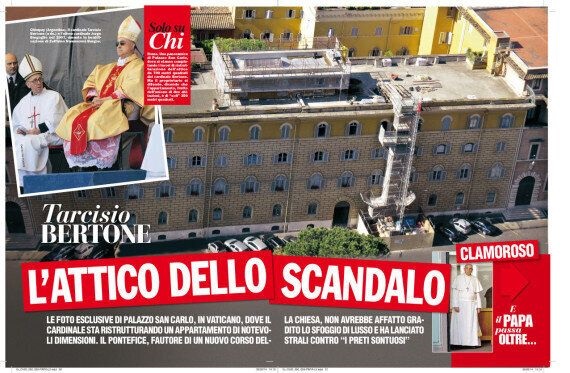
The 700 m2 penthouse, paid for with 732,000 Euro from the Vatican, that Tarcisio Bertone illegally had built on the roof of one of the oldest Roman palaces, filling it with works of art and luxurious furnishings[43]
The criminal investigation did not start with Tarcisio Bertone, one of the most powerful cardinals in the curia, but with Massimo Spina, a manager of the Bambin Gesù hospital in Rome, who illegally paid Euro 700,000 for the renovation of the cardinal’s flat – a flat which, according to Rome’s urban development plan, does not exist[44]. On Bergoglio’s orders, part of the amount (about 150,000 Euro) was returned to the hospital with a donation. But the investigation continues, and discovers that Spina used money from the Bambin Gesù Foundation, 422,000 Euro, again for Cardinal Bertone’s illegal penthouse[45].
To this figure must be added the bill presented by the construction company Castelli Re, another 307,000 Euro, paid by Bertone (on the orders of the Governorate), plus other smaller sums, paid by the Holy See, to reach 732,000 Euro[46]. On 30 August 2013 Tarcisio Bertone submitted his resignation to Pope Francis, who expressly asked him to remain in office until 15 October. On the occasion of Bertone’s resignation, the Pontiff publicly thanks him for his work at the Holy See[47]. In the meantime, the Italian press, following the work of various magistrates, estimates that the amount stolen by Bertone during his ecclesiastical career is around 15 million Euro, which nobody knows where[48].
The scandal over Cardinal Angelo Becciu broke shortly afterwards, and also concerned a real estate matter, namely the purchase of a London mansion on Sloane Avenue in London, in the circumstances of which the active complicity of other members of the Vatican curia is suspected[49]. In 2021 Becciu was charged with abuse of office, embezzlement and subordination of witnesses: the latter offence related to a phone call to the pope in which Becciu tried to convince the pontiff that some of the missing money had been used by the Church to free a kidnapped nun in Mali[50].
In reality, the money has a much more adventurous journey: the IOR invests €200 million in Raffaele Mincione’s Athena Capital Global Opportunities Fund, which uses that money to buy the London palace and, instead of investing in the planned products, uses it to cover the fund’s losses and finance the luxury of some prelates – perhaps with the aim of acquiring impunity for Mincione[51]. The Secretariat of State tries to recover the palace, and pays Mincione £40 million, but the matter is so complicated that, in the end, the Vatican will have to seize that palace from Cardinal Becciu – a palace paid for by almost £300 million[52].
The age-old problems with paedophilia
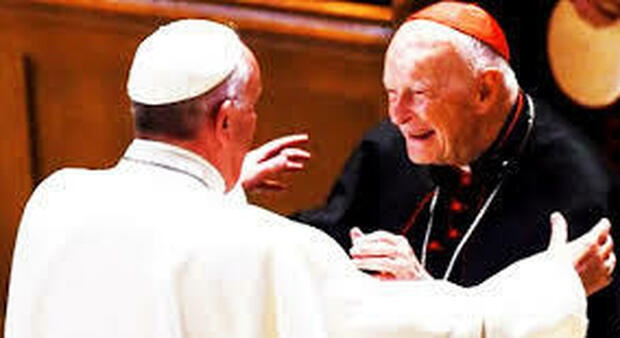
Pope Francis greets US Cardinal Theodore McCarrick, later convicted of multiple paedophilia cases[53]
The problem of paedophilia in the Curia is centuries old, even predating the imposition of celibacy for prelates, and affects young people who attend Church activities and the nuns who belong to it in the same way[54]: a scourge born together with the Roman Catholic Church, which took up the defects of the paganism of the Republican age, when rape was considered part of normality[55]. The phenomenon was tolerated until the end of the Second World War, when demands for the secularisation of the state became part of the awareness of most citizens[56].
But things did not get better, as the example of the years during which Joseph Ratzinger (Pope Benedict XVI) was Archbishop of Munich and Freising shows: during a period spanning more than 70 years, the German church was involved in at least 497 sexual assaults on male adolescents[57]. Involved in the affair were 235 people, including 173 priests, 9 deacons, 48 pastoral co-workers and 48 people from the school system. Ratzinger tried to cover up these events, so as to defend the Church’s reputation. The four cases of violence that occurred between 1977 and 1982 were not denounced by the pope, who has always been regarded as the one to expose the injustices and wrongdoings of the Church[58].
But Benedict XVI merely states that he is deeply saddened by all the cases of sexual abuse, but that he does not hold himself responsible for these facts[59]. Subsequently, the Pope admonishes not the paedophiles, but those within the Church who denounce them, forcing Pope Francis to make very harsh statements on the subject, in a desperate attempt to save the face of Catholicism, partly through the introduction of supervisory authorities[60]. The investigations into paedophilia, which have now spread worldwide, have uncovered dozens of cases, many of them with very serious accusations against prelates in important positions for several decades.
So it does not matter what the Pontiff says: the Vatican is still a mediaeval theocracy, and it is a major disturbance for Italian society and the Italian economy, which even today, 150 years after the Battle of Porta Pia, which marked the political end of the Church State, is still reeling from not only the damage, but also the scandals and financial chasms caused by the Catholic theocracy. The official separation of Church and State was fundamental, but as the examples of Israel, Turkey, Afghanistan and Iran also show, the boundary between the illegitimate influence of religion and the rights of the State and civil society is extremely blurred, and all it takes is a trifle (such as the new battles against abortion against female education, against ethnic and religious minorities, against opposing religious organisations, against religious espionage organisations) is enough to bring even states with a great secular tradition, such as the United States, to the brink of a possible civil war.
ITA019
[1] https://unherd.com/2021/08/the-corruption-of-the-vatican/ ; https://www.transparency.org/en/cpi/2021
[2] https://www.historypage.it/the-great-fraud-of-the-banca-romana/
[3] L’ULTIMA VITTIMA DEL BANCO AMBROSIANO | IBI World Italia
[4] https://www.historypage.it/the-great-fraud-of-the-banca-romana/
[5] https://www.giustizia.it/resources/cms/documents/Giunte_romane_1870_2.pdf
[6] https://www.elibrary.imf.org/view/journals/001/2017/274/article-A001-en.xml
[7] https://timesmachine.nytimes.com/timesmachine/1893/01/27/106811738.pdf ;
[8] L’ULTIMA VITTIMA DEL BANCO AMBROSIANO | IBI World Italia
[9]https://web.archive.org/web/20130919064513/http://www.bancaditalia.it/bancaditalia/storia/1936/dal1893_a_giolitti/LeggeBancaria1893.pdf
[10] L’ULTIMA VITTIMA DEL BANCO AMBROSIANO | IBI World Italia
[11] https://startingfinance.com/approfondimenti/lo-scandalo-del-banco-ambrosiano/
[12] L’ULTIMA VITTIMA DEL BANCO AMBROSIANO | IBI World Italia
[13] https://www.antimafiaduemila.com/home/di-la-tua/238-senti/58266-carlo-calvi-mio-padre-i-ricatti-e-i-soldi-di-licio-gelli.html ; https://www.ilpost.it/2022/06/18/roberto-calvi/ ; https://www.ilfattoquotidiano.it/2013/12/15/morte-roberto-calvi-pm-probabile-coinvolgimento-gelli-ma-non-prove-certe/814519/ ; https://www.misteriditalia.it/casocalvi/Intervistafiglio(La%20Repubblica).pdf ; https://books.google.de/books?id=EziFCgAAQBAJ&pg=PA322&lpg=PA322&dq=carlo+calvi+ambrosiano&source=bl&ots=XFwGAoMeaI&sig=ACfU3U23FEru8RsXzrdSmX8l9CmhFXwO-g&hl=en&sa=X&ved=2ahUKEwjnh7WBkLb8AhWHD-wKHdX0BfU4FBDoAXoECBYQAw#v=onepage&q=carlo%20calvi%20ambrosiano&f=false
[14] https://www.ansa.it/sito/notizie/economia/2022/06/18/quaranta-anni-fa-lomicidio-calvi.trovato-impiccato-a-londra_5ccdf0a7-81e2-4664-a875-f9aec23935c2.html ; https://www.antimafiaduemila.com/home/mafie-news/261-cronaca/90208-roberto-calvi-fu-assassinato-sul-suo-omicidio-l-ombra-della-strage-di-bologna.html ; https://www.ultimavoce.it/omicidio-calvi-chi-voleva-morto-il-banchiere-di-dio/
[15] https://startingfinance.com/approfondimenti/lo-scandalo-del-banco-ambrosiano/
[16] https://startingfinance.com/approfondimenti/lo-scandalo-del-banco-ambrosiano/
[17] https://st.ilsole24ore.com/art/notizie/2013-01-30/lacquisizione-antonveneta-083133.shtml?uuid=Abb9OTPH
[18] https://st.ilsole24ore.com/art/notizie/2013-01-30/lacquisizione-antonveneta-083133.shtml?uuid=Abb9OTPH
[19] Ihttps://www.ilpost.it/2011/05/29/il-caso-antonveneta/
[20] Ihttps://www.ilpost.it/2011/05/29/il-caso-antonveneta/
[21] https://www.leccenews24.it/cronaca/mistero-morte-papa-luciani.htm
[22] Papa Luciani avvelenato per aver scoperto le frodi azionarie del Vaticano, le rivelazioni shock in un libro (antimafiaduemila.com)
[23] https://www.libertates.com/operazione-piazza-delle-cinque-lune-il-caso-emanuela-orlandi-ii-irrompono-gli-uomini-di-enrico-de-pedis-nel-luogo-dove-e-segregata-emanuela-orlandi-e-la-liberano/
[24] https://www.repubblica.it/2008/06/sezioni/cronaca/emanuela-orlandi/emanuela-orlandi/emanuela-orlandi.html
[25] http://www.italianinsider.it/?q=node/8121
[26] https://www.repubblica.it/2008/06/sezioni/cronaca/emanuela-orlandi/emanuela-orlandi/emanuela-orlandi.html
[27] https://www.libertates.com/operazione-piazza-delle-cinque-lune-il-caso-emanuela-orlandi-ii-irrompono-gli-uomini-di-enrico-de-pedis-nel-luogo-dove-e-segregata-emanuela-orlandi-e-la-liberano/
[28] https://www.nytimes.com/1979/11/28/archives/popes-turkish-visit-gets-extra-security-death-threat-from-escaped.html
[29] https://picchionews.it/cronaca/somparsa-di-emanuela-orlandi-nuove-rivelazioni-da-un-amica-antichi-scandali-e-tre-fascicoli-spariti
[30] https://www.vaticannews.va/en/vatican-city/news/2021-11/administration-of-the-patrimony-of-the-apostolic-see.html
[31] https://www.vatican.va/roman_curia/uffici/apsa/index_en.htm
[32] https://www.aif.va/ita/home.aspx
[33] https://www.reuters.com/article/oittp-vaticano-riciclaggio-apsa-idITKCN0ST1NI20151104
[34] https://www.ilfattoquotidiano.it/2013/06/28/nunzio-scarano-monsignor-500-quella-reggia-da-favola-e-passione-per-limmobiliare/640117/
[35] https://www.reuters.com/article/oittp-vaticano-riciclaggio-apsa-idITKCN0ST1NI20151104
[36] https://www.meetingrimini.org/personaggi/gotti-tedeschi-ettore/
[37] https://formiche.net/2015/01/vaticano-finanza-papa-francesco/
[38] https://formiche.net/2015/01/vaticano-finanza-papa-francesco/
[39] https://www.italiaoggi.it/archivio/il-successore-di-gotti-tedeschi-allo-ior-non-sara-certo-un-italiano-1797823
[40] https://www.italiaoggi.it/archivio/il-successore-di-gotti-tedeschi-allo-ior-non-sara-certo-un-italiano-1797823
[41] https://www.ilsole24ore.com/art/vaticano-l-aif-riammessa-gruppo-egmont-network-mondiale-intelligence-finanziaria-ACAfXsDB
[42] https://www.kath.ch/newsd/rene-bruelhart-vor-gericht-ich-sehe-keinen-interessenskonflikt/
[43] https://www.huffingtonpost.it/2014/05/28/foto-attico-cardinal-tarciso-bertone-settimanale-chi_n_5402050.html
[44] Cardinal Bertone, lo scandalo dell’attico arriva in tribunale – ilGiornale.it
[45] Cardinal Bertone, lo scandalo dell’attico arriva in tribunale – ilGiornale.it
[46] Tarcisio Bertone e il super attico in Vaticano: al via il processo nella Santa Sede. Nomi, ruoli e accuse dello scandalo – Il Fatto Quotidiano
[47] https://archive.vn/20130831104628/http://attualita.vatican.va/sala-stampa/bollettino/2013/08/31/news/31603.html
[48] https://www.huffingtonpost.it/2014/05/28/foto-attico-cardinal-tarciso-bertone-settimanale-chi_n_5402050.html
[49] https://www.ilfaroonline.it/2022/11/24/nuovo-scandalo-in-vaticano-il-cardinale-becciu-indagato-per-associazione-a-delinquere/498206/
[50] https://www.repubblica.it/cronaca/2022/11/30/news/scandalo_in_vaticano_becciu_registrava_le_telefonate_del_papa-376898781/
[51] https://www.corriere.it/economia/vaticano-news/22_luglio_01/vaticano-palazzo-londra-1c0a6b06-f93a-11ec-9f35-cf689cde92de.shtml
[52] https://www.ilfattoquotidiano.it/2021/07/03/scandalo-vaticano-le-tappe-della-vicenda-dallinvestimento-nel-fondo-speculativo-allaffaire-del-palazzo-di-londra/6249857/
[53]https://www.ilmessaggero.it/vaticano/pedofilia_vaticano_papa_francesco_chiede_scusa_vittime_cardinale_mccarrick_news_oggi-5579453.html
[54] https://www.arte.tv/it/videos/078749-000-A/abusi-sessuali-sulle-suore-l-altro-scandalo-nella-chiesa/ ; https://manifesto4ottobre.blog/2021/05/14/lolocausto-bianco-la-chiesa-di-fronte-alla-pedofilia/ ; https://www.rivistailmulino.it/a/la-pedofilia-ecclesiastica-e-la-cei-1
[55] https://profilbaru.com/it/Pedofilia_e_Chiesa_cattolica_nella_storia
[56] https://profilbaru.com/it/Pedofilia_e_Chiesa_cattolica_nella_storia
[57] https://www.lastampa.it/vatican-insider/it/2022/01/21/news/il_peccato_di_ratzinger-2837194/
[58] https://www.lastampa.it/vatican-insider/it/2022/01/21/news/il_peccato_di_ratzinger-2837194/
[59] https://www.ilriformista.it/scandalo-pedofilia-ratzinger-risponde-alle-accuse-chiedo-perdono-ma-non-sono-un-bugiardo-278900/
[60] https://www.ilsole24ore.com/art/ratzinger-ecco-come-nasce-l-ultimo-mea-culpa-pedofilia-chiesa-AEuNj3CB

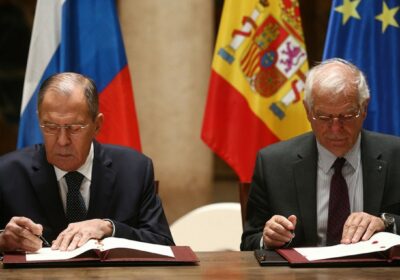


Leave a Reply